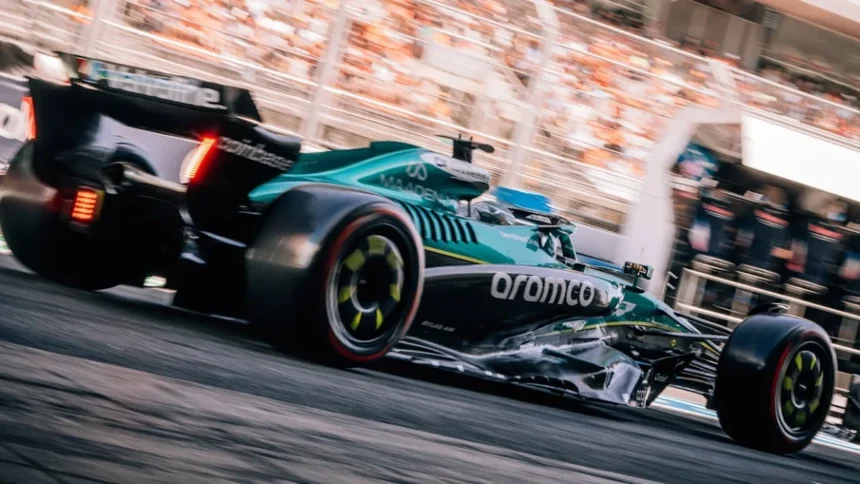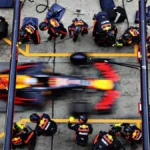F1 2026 is set for a seismic shift, with the FIA unveiling a comprehensive overhaul of technical, sporting, and sustainability regulations. The changes aim to make the cars more agile, safer, and environmentally responsible, while enhancing the racing spectacle and attracting new manufacturers. Here’s a detailed breakdown of every major new rule and what it means for the future of F1.
Everything New In F1 2026
Power Unit Revolution
1. Simplified Hybrid Engines
The 2026 power units will drop the MGU-H (Motor Generator Unit – Heat), simplifying the hybrid system and making it more road-relevant.
The MGU-K (Motor Generator Unit – Kinetic) becomes much more powerful, with electric power output rising from 120kW to 350kW; a nearly 300% increase.
Internal combustion engine (ICE) power drops to 400 kW, but the boost in electrical power maintains overall performance.
2. Doubling Energy Recovery
The amount of energy recovered under braking doubles to 8.5 megajoules per lap, further increasing the hybrid system’s efficiency and impact.
3. 100% Sustainable Fuel
All F1 cars will run on fully sustainable, drop-in fuel, compatible with standard ICE vehicles. This move sets a new environmental benchmark for motorsport and aligns with F1’s Net Zero 2030 goal.
4. Overtaking Boost: Manual Override Mode
To spice up racing in F1 2026, a new ‘Manual Override’ (MGU-K Override) mode allows the following car to deploy extra electrical power (350kW up to 337kph and +0.5MJ of energy) when within one second of the car ahead, making overtakes easier and more frequent.
Aerodynamics and Chassis: Smaller, Lighter, Smarter
1. Downsizing for Agility
Cars will be shorter (wheelbase reduced by 20cm to 3,400mm) and narrower (width down by 10cm to 1,900mm), making them nimbler and better suited for close racing.
Minimum weight drops by 30kg to 768kg (722kg car + 46kg tyres), improving acceleration and handling.
2. Active Aerodynamics
For the first time, F1 2026 will feature fully active aerodynamics, with adjustable front and rear wings.
Drivers can switch between two modes: ‘Z-mode’ for maximum cornering grip and ‘X-mode’ for minimal drag on straights, similar to but more advanced than the current DRS system.
The front wing is now 100mm narrower and features a two-element flap; the rear wing has three elements, with the lower beam wing removed.
3. Reduced Downforce and Drag
Downforce is cut by 30%, and drag by 55%, making cars more efficient and less reliant on turbulent airflow, which should improve wheel-to-wheel racing in F1 2026.
4. Tyre and Wheel Changes
The 18-inch wheels remain, but tyre widths are reduced (front by 25mm, rear by 30mm), slightly decreasing grip but aiding agility.
5. Streamlined Bodywork
Front wheel arches are removed, and new wheel wake control boards are mandated to better manage airflow and reduce turbulence for following cars.
The floor will be partially flat, with a less powerful diffuser, reducing ground effect and minimising the ‘porpoising’ that plagued recent designs.
Safety: Stronger, Smarter Protection
1. Enhanced Crash Structures
A new two-stage front impact structure (FIS) is introduced to prevent the nose from detaching after an initial crash, improving driver safety in secondary impacts.
Side intrusion protection is more stringent, especially around the cockpit and fuel cell, with more than double the previous standards, all without adding weight.
2. Improved Roll Hoops and Lighting
Roll hoop strength is increased from 16G to 20G, and test loads rise from 141kN to 167kN, matching other top-tier single-seaters.
Rear wing endplate lights and new lateral safety lights are brighter and more visible, aiding visibility in poor conditions and indicating ERS status when a car is stopped on track.
3. Upgraded GPS and Active Safety
The GPS antenna is repositioned for better sensitivity, paving the way for future active safety systems.
Sustainability in F1 2026: Racing Towards Net Zero
The use of 100% sustainable fuel and a 50/50 split between electrical and thermal power mark a major step towards F1’s Net Zero 2030 target.
The new fuel can be used in standard ICE vehicles, potentially reducing global transport emissions if adopted widely.
Manufacturer and Team Impact In F1 2026
The new rules have attracted a record number of power unit suppliers, with Mercedes, Ferrari, Renault, Honda, Audi, Red Bull, Ford, and Cadillac all committed for 2026, promising a new era of manufacturer competition.
The 2026 F1 regulations represent the sport’s boldest transformation in decades. With lighter, more agile cars, advanced hybrid engines, active aerodynamics, and a strong sustainability focus, Formula 1 aims to deliver closer racing, improved safety, and a greener future, without sacrificing the speed and spectacle that define the pinnacle of motorsport.
Also Read: Inside F1 2026: New Calendar, Teams, And Race Debuts























